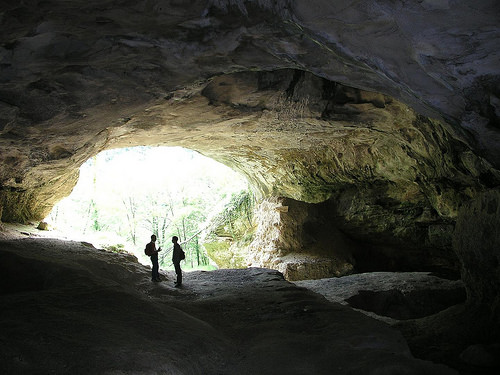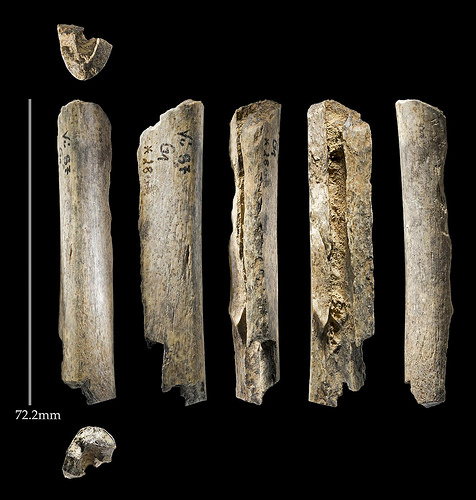
PROCEEDINGS OF THE NATIONAL ACADEMY OF SCIENCES—Researchers report ages of Neanderthal remains using an improved dating technique. Neanderthal remains from Vindija Cave in northern Croatia have been previously dated at approximately 32,000 years old, making them the most recent known Neanderthal remains and implying considerable temporal overlap between Neanderthals and modern humans in Central Europe. Thibaut Deviese and colleagues dated four Neanderthal bone samples from Vindija, one of which was previously unidentified, by extracting the amino acid hydroxyproline (HYP) from bone collagen. Because HYP occurs almost exclusively in collagen, dating purified HYP removed modern contaminants, including conservation materials, from the specimens. The authors obtained dates older than 40,000 years for all four sets of Neanderthal remains, far older than previously obtained dates. Dating of animal bones from the same layer as the Neanderthal bones yielded a wide range of dates. The finding suggests that postdepositional mixing of material has occurred, and therefore Upper Paleolithic tools found alongside the Neanderthal bones may not necessarily date from the same period. The Neanderthals at Vindija Cave likely did not overlap with modern humans, and were not part of a late-surviving, refugial population as previously thought, according to the authors.
_______________________________________
Vindija Cave in Croatia, which was occupied by Neanderthals more than 40,000 years ago. Credit: Image courtesy of Ivor Karavani
__________________________________________________
Neanderthal bone found at Vindija Cave, Croatia. Credit: Thomas Higham
_______________________________________
Article Source: Proceedings of the National Academy of Sciences news release
________________________________________________
*”Direct dating of Neanderthal remains from the site of Vindija Cave and implications for the Middle to Upper Paleolithic transition,” by Thibaut Deviese et al.
____________________________________________________
Receive 30 days free access to the popular new CuriosityStream lineup of documentaries on science, history, nature, and technology as a new Popular Archaeology premium subscriber.
___________________________________________
Travel and learn with Far Horizons.
____________________________________________
This richly illustrated issue includes the following stories: Recent findings shedding new light on the whereabouts of the remains of Philip of Macedon, father of Alexander the Great; how an archaeologist-sculptor is bringing bones of the dead back to life; archaeologists uncovering town life at the dawn of civilization; an exclusive interview with internationally acclaimed archaeologist James M. Adovasio about what makes the Meadowcroft Rockshelter prominent in the ongoing search for the first Americans; what archaeologists are finding at the site of the ancient city of Gath, the home town of the biblical Philistine giant, Goliath; and how scientists are redrawing the picture of human evolution in Europe. Find it on Amazon.com.









